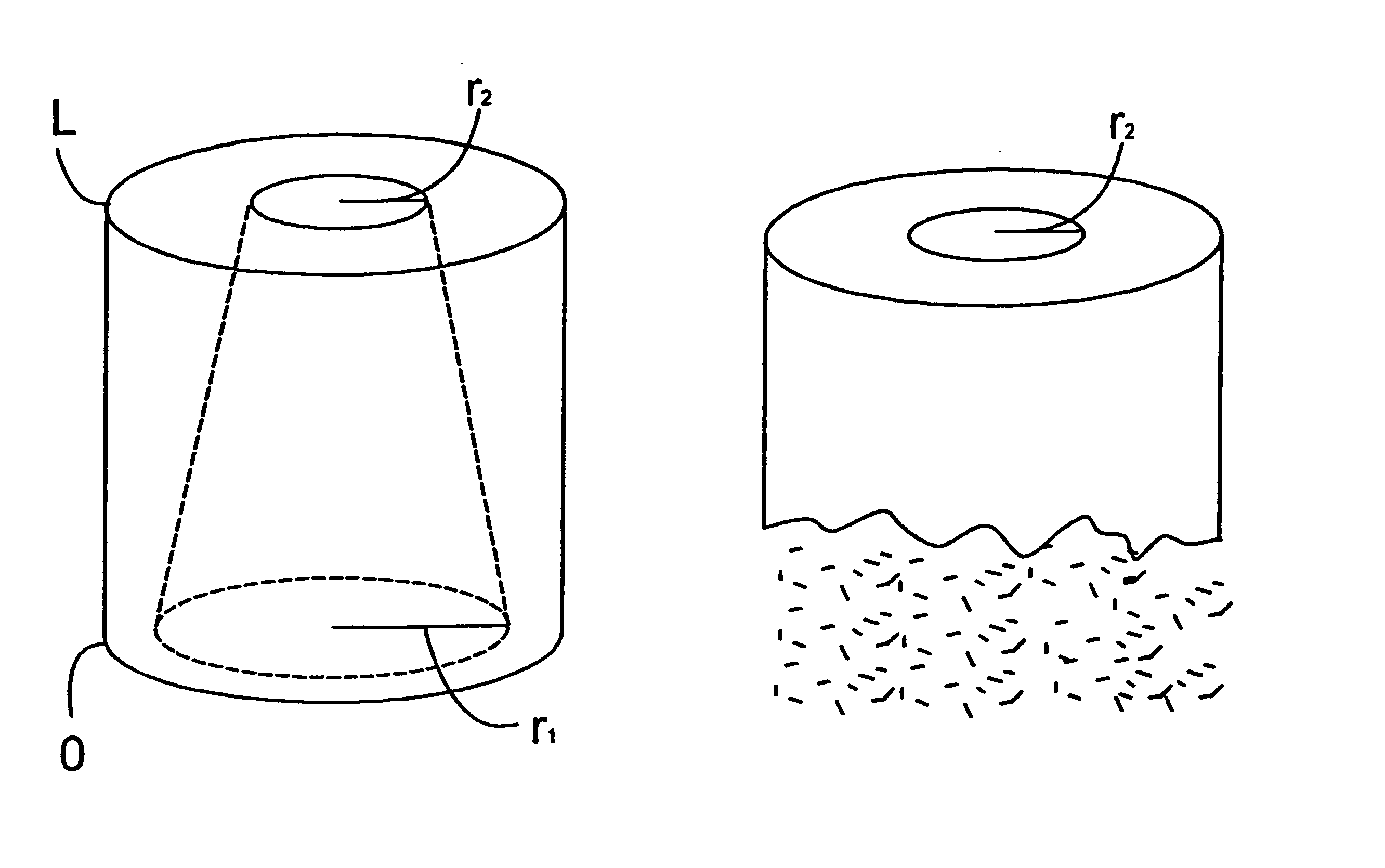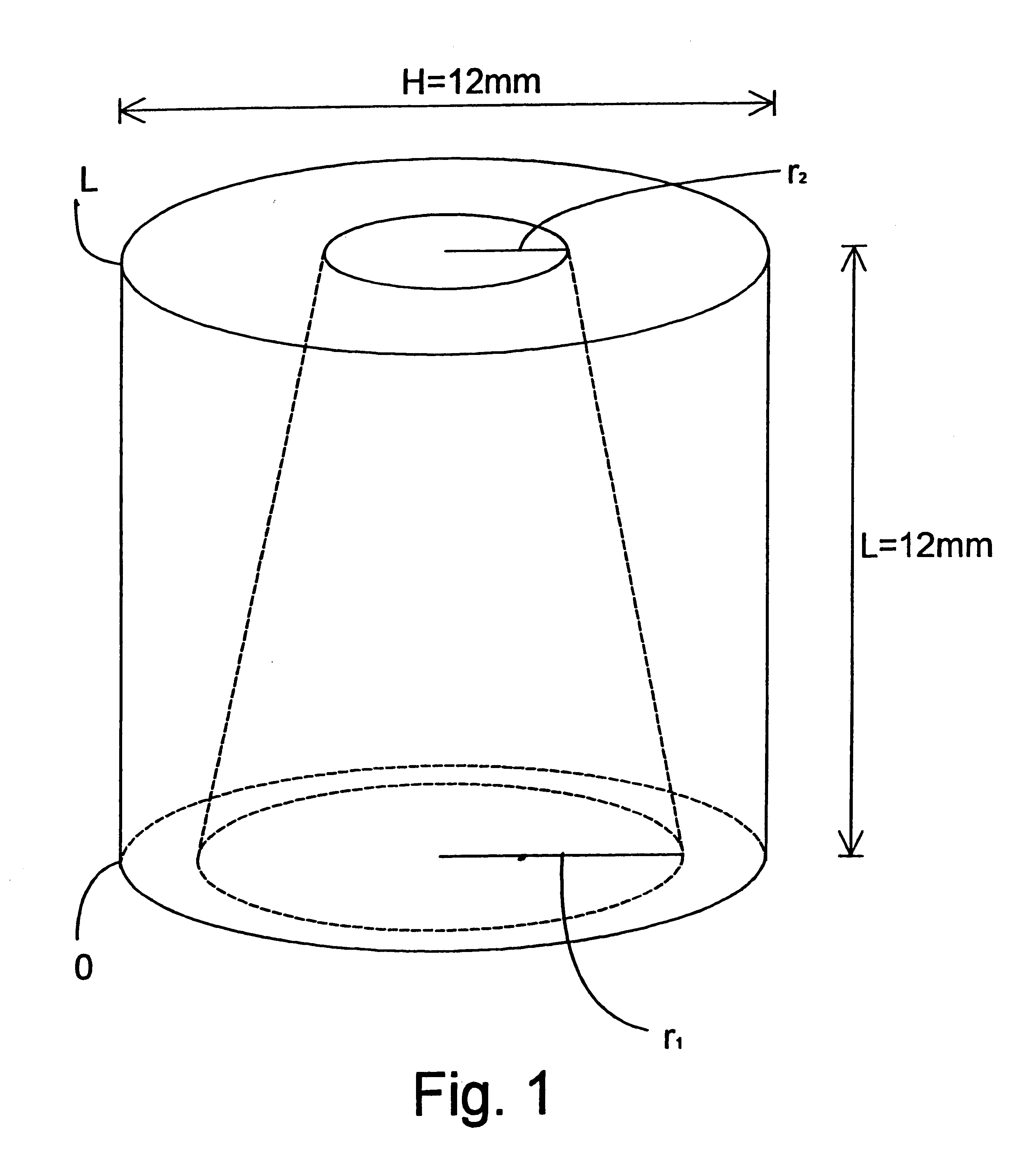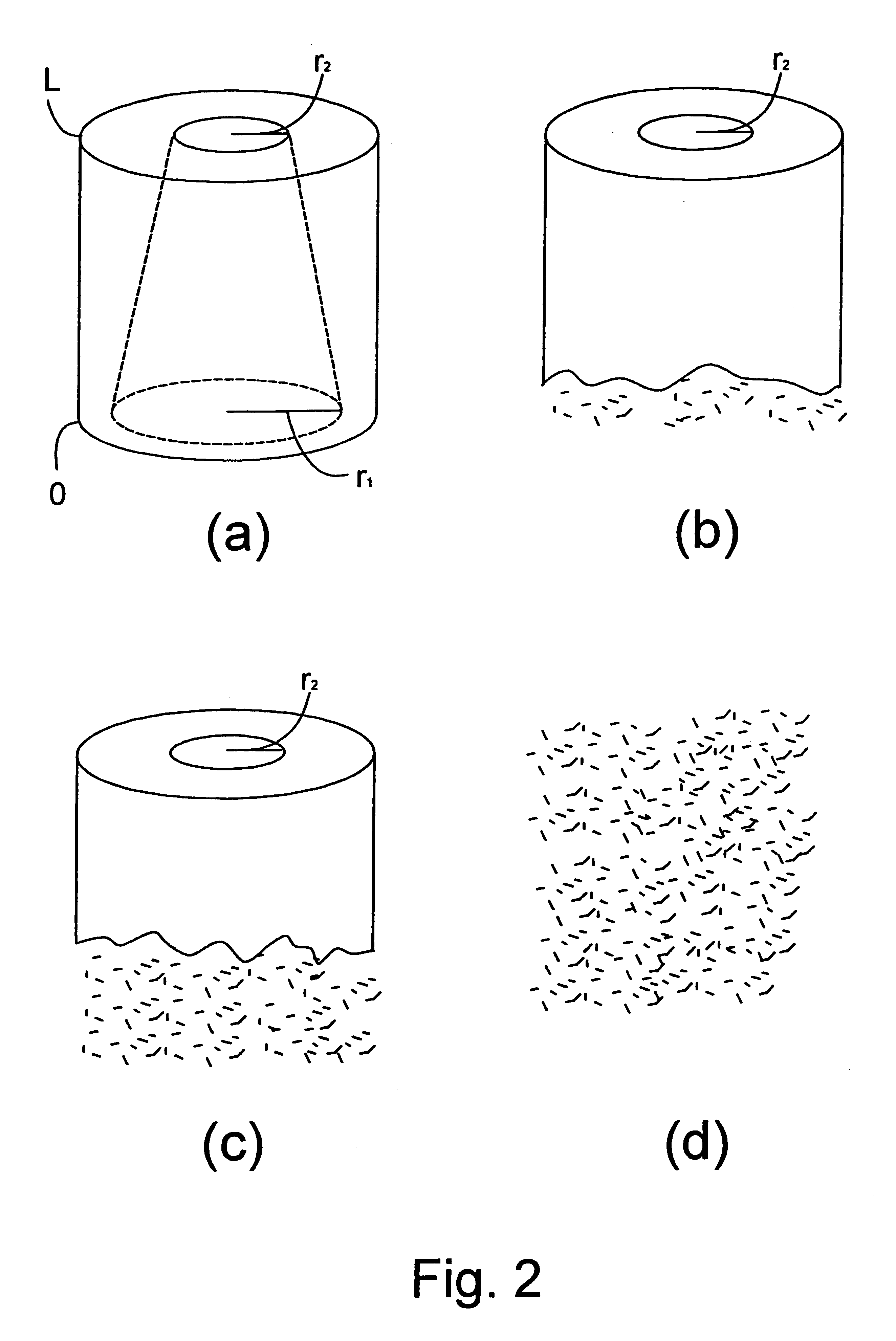Biodegradable implant manufactured of polymer-based material and a method for manufacturing the same
a biodegradable implant and polymer-based technology, which is applied in the field of biodegradable implants manufactured of polymer-based materials and a method for manufacturing the same, can solve the problems of affecting the health of patients, affecting the quality of life of patients, so as to achieve the effect of reducing the risk of infection
- Summary
- Abstract
- Description
- Claims
- Application Information
AI Technical Summary
Benefits of technology
Problems solved by technology
Method used
Image
Examples
example 2
There were manufactured implants having a height of 12 mm, a diameter of 12 mm and a cylindrical central hole 1 in the direction of longitudinal axis of the cylindrical configuration and with a constant diameter of 10.
In the curved outer surface of the implants, there were drilled smaller radial-directed holes extending to the central hole 1 in a following manner: at the first end of the implant, close to its edge and in the direction of the periphery, around the implant holes were drilled having a diameter of 2 mm and extending to the central hole, between which holes a strip of 0.5 mm was left in the outer surface of the implant in the direction of periphery. Above this line of holes RR1 (FIG. 2), in a corresponding manner as the line of holes RR1, there were drilled other holes having a diameter of 1.5 mm having strips of 1 mm between them in a manner that between the first RR1 and the second RR2 line of holes, strips of 1 mm were left. Above the second line of holes RR2, in a co...
example 3
Preform having a width of 3 mm was manufactured by extrusion (single-screw extruder) of polyglycol according to Example 1, which preform was cooled to room temperature by means of moving cloth. Bars of 1 m were cut out of the blank. A series of bars 2 were vertically attached parallel at the same horizontal level at the second end to a chuck jaw structure 3 of a pre-hydrolysis apparatus according to FIG. 4. The chuck jaw structure 3 had been coupled to a vertical conveyor 5 in connection with a body 4, by means of which vertical conveyor it was possible to lift and lower a series of bars 2T slowly in the vertical direction. The lower ends of the series of bars 2T were thus free ("free end"). By means of the vertical conveyor 5 the bars 2 were pre-hydrolyzed in a buffer solution of Example 1 at a temperature of 37.degree. C. by lowering them slowly in a buffer solution 7 in a tank 6, placed below the bar series 2T, by means of the vertical conveyor 5 of the chuck jaw structure 3, and...
example 4
Cylindrical preform having a diameter of 3 mm was manufactured of amorphous (non-crystalline) lactide copolymer (Resomer, LID molecular ratio 85 / 15, M.sub.v =200,000, manufactured Boehringen / lngelheim, Germany) by extrusion (single-screw extruder), which preform was cooled to a room temperature on a moving cloth. A pre-hydrolysis apparatus according to FIG. 5 was created for the test arrangement. Out of the above mentioned preform, bars 2 having a length of 1 m were cut and placed as a series of bars 2T to a vertical, isolated tank 10 at a mounting bracket 11 belonging to the apparatus in a manner that the bars 2 were apart from each other in the vertical direction. By using a pump 12 in the lower part of the tank, phosphate buffer solution 15 according to Example 1 was pumped at a temperature of 70.degree. C. slowly to the tank in a manner that the filling of the tank 10 took 10 hours. As soon as the fluid surface had risen to the level of the upper ends of the bars in the series o...
PUM
| Property | Measurement | Unit |
|---|---|---|
| thickness | aaaaa | aaaaa |
| thickness | aaaaa | aaaaa |
| temperature | aaaaa | aaaaa |
Abstract
Description
Claims
Application Information
 Login to View More
Login to View More - R&D
- Intellectual Property
- Life Sciences
- Materials
- Tech Scout
- Unparalleled Data Quality
- Higher Quality Content
- 60% Fewer Hallucinations
Browse by: Latest US Patents, China's latest patents, Technical Efficacy Thesaurus, Application Domain, Technology Topic, Popular Technical Reports.
© 2025 PatSnap. All rights reserved.Legal|Privacy policy|Modern Slavery Act Transparency Statement|Sitemap|About US| Contact US: help@patsnap.com



